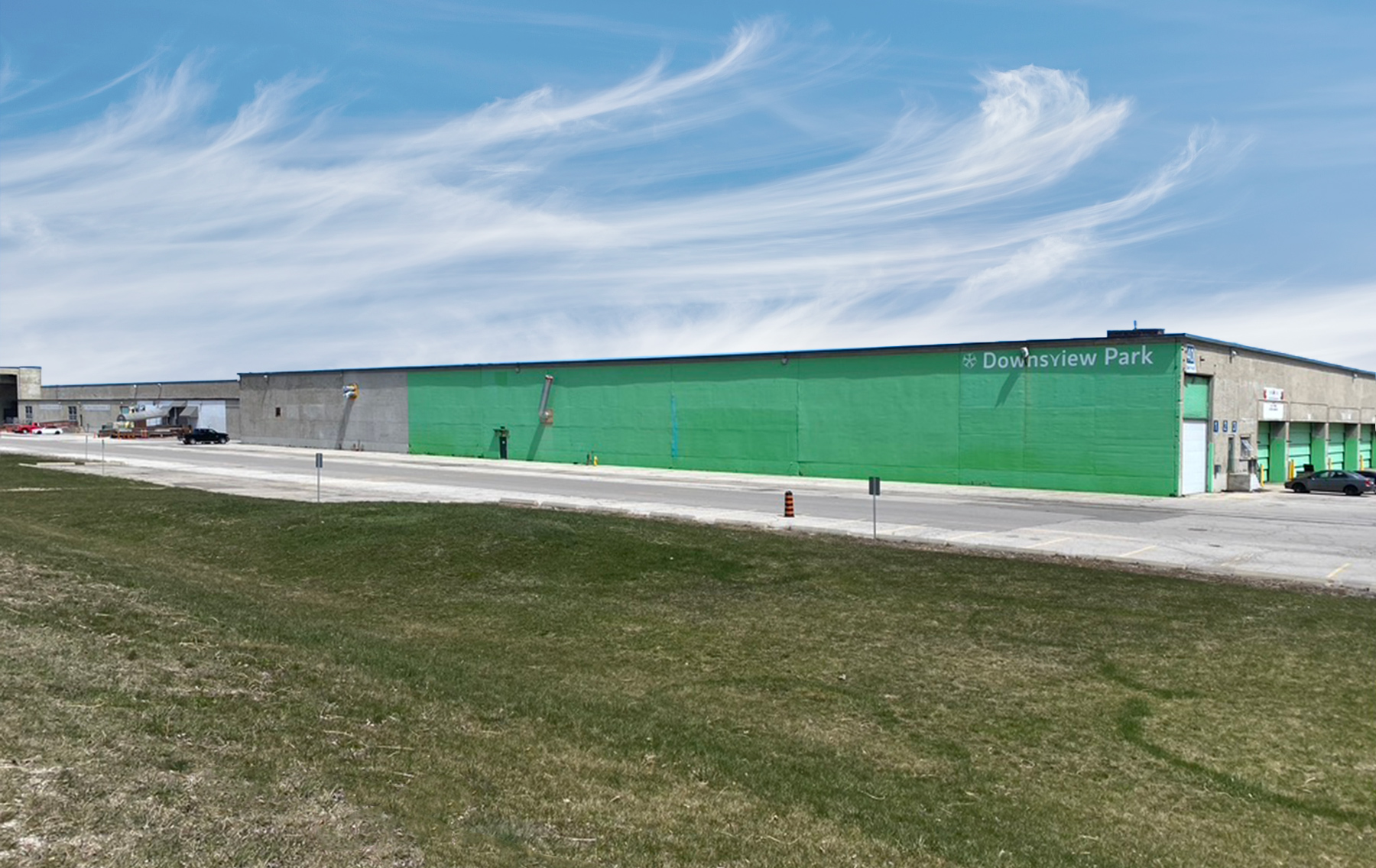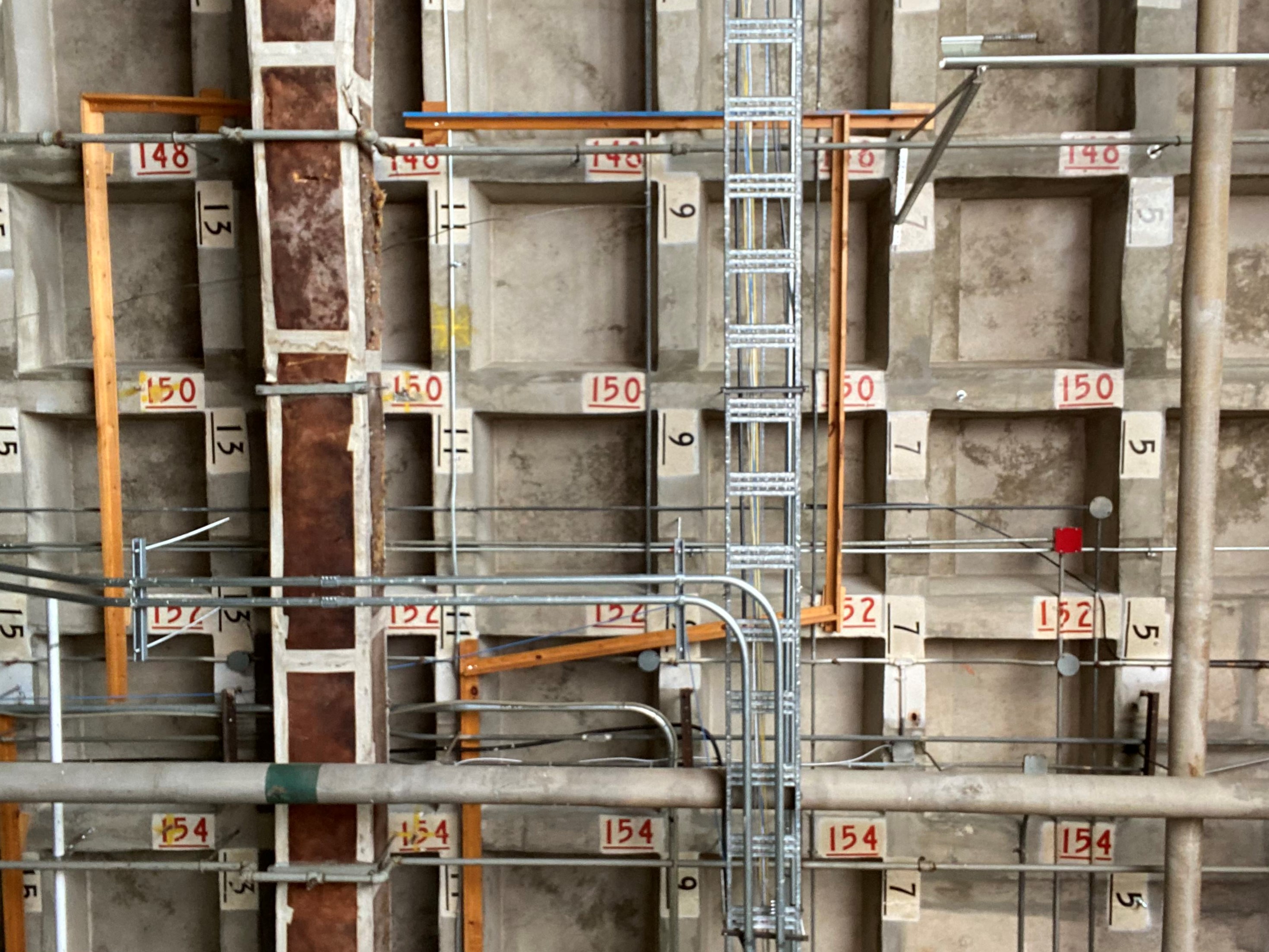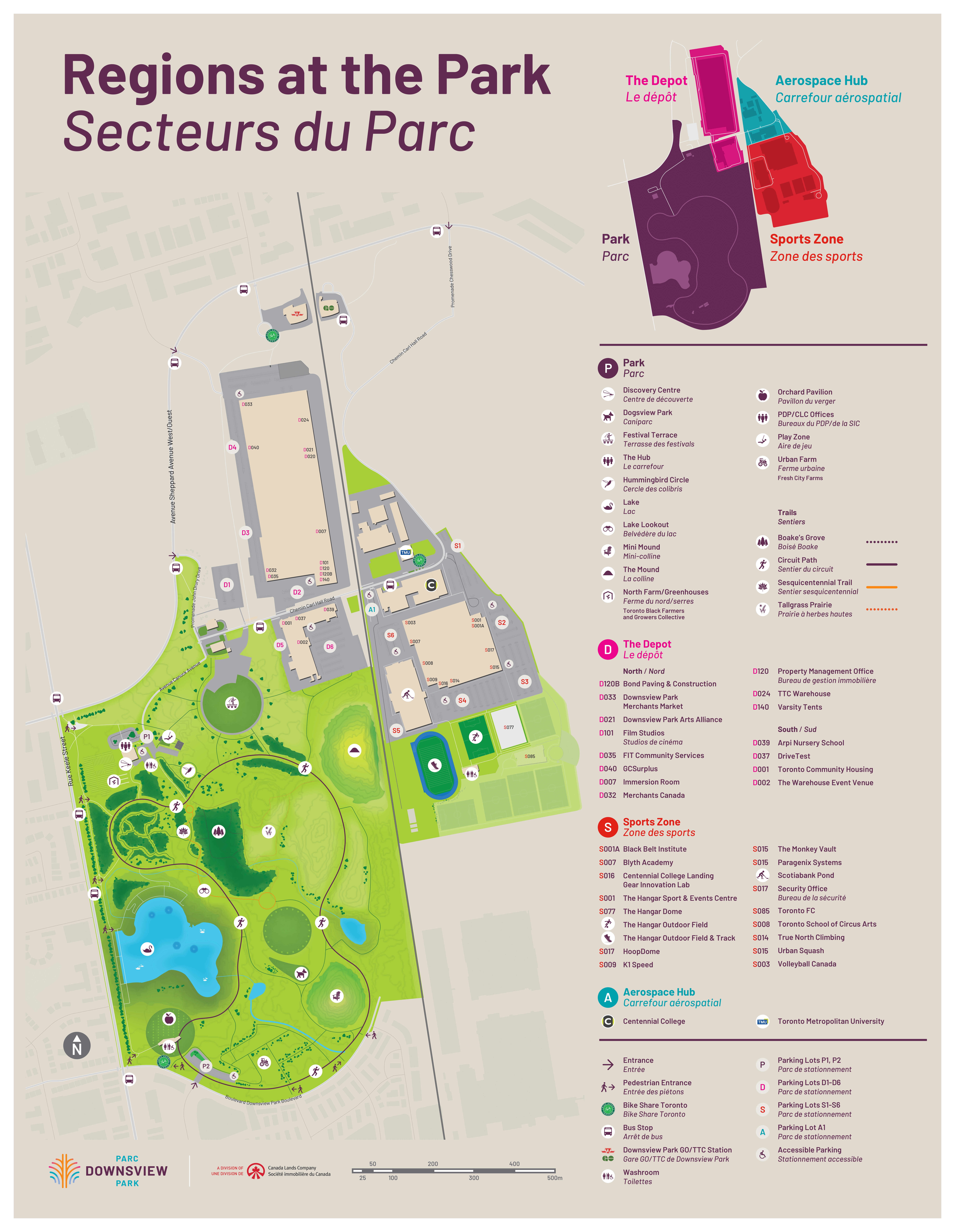The Downsview Supply Depot
The military needs large, secure spaces to assemble and stage its missions and supply lines, usually adjacent to airstrips. With the commencement of the Korean War in 1950, the Royal Canadian Air Force (RCAF) acquired the de Havilland lands and buildings and immediately set about constructing a supply depot that would serve the regular and reserve units in the region located at what is today 40 Carl Hall Road.
The Downsview Supply Depot is one of the largest such facilities the RCAF has ever built. The 7.5 hectare (18.5 acre) building constructed of reinforced concrete was completed in 1954. Cold war concerns about nuclear threats and bombings prevailed at this time, and so it is said that the building was designed to withstand the force of a ballistic missile attack. Housed beneath the supply depot is a stormwater reservoir that can hold more than four million litres which could be used for cleaning or putting out fires in the event of an attack.
The Supply Depot had 56,000 cubic metres of storage and provided goods and equipment – known as materiel - to sea, land and air elements of the RCAF. The building also featured modern industrial amenities such as a pneumatic tube delivery system and an internal electric train that moved around palettes and crates.
“Most of what was in the depot when I was around was general storage and a lot of spare parts for aircraft,” explained retired Major John Page. “When Canada bought an aircraft at that time, you bought the spare parts you would need for the next 20 years. So that’s where most of them were kept.”
The Supply Depot has a coded grid painted onto the concrete ceiling that is used to track and store the equipment and materials held there. “The Depot was basically a humongous warehouse with miles of racking arranged in a grid. There was a stock record system that noted the numbers on the ceiling where each item was located. It was a very simple system and it worked perfectly.” The original paper-based stocking records gave way to computerized versions but the same numbered grid tracking system is still in place in other military depot facilities.
The Supply Depot currently serves several tenants including film studios and the Merchants Market.





